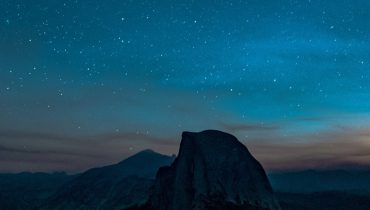Online brand building compensates for declining TV and magazine audiences
• Beauty adspend to strengthen throughout 2019-2021 after two years of decline
• Internet advertising overtook television as the biggest medium for beauty in 2018, and will attract 50% of all beauty adspend in 2021
• China is the biggest beauty ad market after early adoption of e-commerce advertising
• Beauty ad spend in Australia will continue to decline in 2019, witnessing a modest recovery in 2021, driven by an 11% increase in online advertising.
Growth in global beauty adspend will rise from -1.2% in 2018 to 2.7% this year, and will reach 4.7% in 2021, according to Zenith’s Beauty Advertising Expenditure Forecasts*, published today. This acceleration of growth will be spurred by the global expansion of e-commerce advertising and the improved supply of premium digital environments. Beauty adspend will total US$14.4bn this year, and reach US$15.8bn in 2021.
Beauty adspend has struggled in recent years as magazines and television – traditionally favoured by brands for their ability to evoke emotional connections with consumers through bold imagery and high production quality – have lost audiences to the internet. While these channels are still valuable, circulations have declined for many years and ratings are now falling in key markets.
Magazines commanded 21% of beauty adspend in 2014, but fell to 13% in 2018, though that’s still high compared to their 4% share across all categories. By 2021, magazines will account for 8% of beauty adspend versus 3% for the market as a whole. Television’s share of beauty adspend dipped below 50% for the first time in 2016, and fell to 40% in 2018, while accounting for 31% of adspend across all categories. It’s forecast to fall to 35% by 2021, compared to 27% for all categories.
The beauty market is becoming more fragmented, and brand loyalty is harder to maintain as the number of brands grows. Incumbent brands are facing competition from new competitors: direct-to-consumer (D2C) brands, eco-brands and retailer-owned brands. Many of these new brands, particularly D2C, have sought growth through targeted promotions, without investing in the mass-reach brand building that typically drives beauty adspend growth.
This combination of shrinking audiences and new competition from new brands that don’t try to build mass reach has led to sustained weakness in the beauty ad market. Overall, beauty adspend only grew once between 2014 and 2018, and that was by just 0.9%, in 2016. Beauty adspend fell by 1.2% in both 2017 and 2018.
This situation is beginning to change as digital platforms, like Instagram, increase the supply of high-quality environments, connect brands with image-conscious consumers in places where they search for inspiration, and attract more of these brands’ budgets. Meanwhile, D2C brands are finding that there’s a limit to the market share they can win without creating mass awareness, and many are beginning to invest in traditional brand-building campaigns.
E-commerce sales are rising rapidly; beauty brands are increasingly forming partnerships with retail platforms as retailer media becomes more available or creating their own D2C platforms. These are not complementary investments: spending on retailer media can cannibalise D2C sales, and vice versa. Brands need to choose which of these two routes to e-commerce they embrace.
This growth in online brand-building and e-commerce advertising is stimulating rapid growth in beauty brands’ internet advertising, and growth in beauty adspend overall. In 2018 internet advertising overtook television to become the largest advertising medium for the beauty category, and sustained double-digit growth is expected through 2021, when it will account for 50% of all beauty adspend.
Despite the rise of e-commerce, the majority of beauty purchases are still made in bricks-and-mortar stores. While consumers may browse online, most want to experience a product before buying it.
“Brands need to work with retailers to create more in-store experience opportunities, and use new technology like Augmented Reality to create digital brand experiences that allow consumers to try before they buy online,” said Matt James, Zenith’s Global Brand President. “By tying together their e-commerce and in-store experiences, beauty brands can lead consumers down the path to purchase more effectively.”
“As is the case across a number of markets, in Australia Gen Z’s propensity for mobile research will be mirrored by a marked acceleration in mobile search revenues as beauty advertisers attempt to intercept consumers during the process of selection” said Zenith Australia CEO, Nickie Scriven. “So while online advertising as a whole is likely to grow 11% in 2021, search revenues will increase by 18%.”
Consumers expect brands to have ethical supply chains and sustainable products, and will call out those that don’t on social media. Demand for plant-based products and eco-friendly packaging is rising rapidly – sales of vegan beauty products rose 38% in the UK last year – and is expected to continue.
“People are much more conscious about understanding where the products they use come from and how they are tested” said Tamina Plum, Global Head of Clients at Zenith. “Brands that commit to meeting their customers’ expectations will be able to win their loyalty.”
“Brands in the beauty category are continuing to move their budgets to internet advertising to take advantage of its dual combination of effective brand building and a direct channel to sales,” said Jonathan Barnard, Zenith’s Head of Forecasting, “Nevertheless, television and magazines will remain important to beauty brands and attract a considerably higher share of beauty adspend than across the market as a whole.”
China leads by total spend, while India leads growth
China is the leading market for beauty adspend, with an estimated US$6.2bn in 2019. This is unusual; for the ad market as a whole, and within the automotive and healthcare categories Zenith examined earlier this year, China is second behind the US. Beauty retail sales grew faster than any other large category last year due to heavy demand and rising interest in the male beauty sub-category. Early adoption of e-commerce advertising is the main driver of China’s strong beauty performance. It’s grown for more than a decade and continued investment is expected to boost beauty adspend to US$6.9bn by 2021. Chinese tourists also help shape beauty ad markets in other countries by attracting targeted advertising in airports, shopping centres and other high-traffic areas.
The US is the second-largest market, spending US$2.6bn on beauty advertising in 2019. US beauty advertising is still focused on television and magazines, where 40% and 37% of budgets will be spent this year respectively, while 23% will be spent on internet advertising. Beauty brands are only just beginning to unlock the value of e-commerce advertising, and there is huge potential for growth over the next few years, allowing the US to narrow the gap with China.
India is the fastest-growing market for beauty adspend, and is the only market that hasn’t suffered at least one year of decline since 2014. Zenith forecasts 19% average annual growth to 2021. India has the least mature market – accounting for 0.3% of GDP, less than half the global average of 0.7% – and is therefore developing quicker, lifting beauty adspend rapidly along with other categories. Among all the markets growing in the survey, India is also the fastest growing for advertising as a whole.
* This report is Zenith’s first exclusive survey of beauty advertising in 14 key markets across the world: Australia, Brazil, Canada, China, France, Germany, India, Italy, Russia, South Korea, Spain, Switzerland, the UK, and the USA. These markets account for 77% of global adspend across all categories and are representative of trends worldwide.
For further information, please contact:
Jonathan Barnard
Head of Forecasting, Director of Global Intelligence
Tel: +44 20 7961 1192
E-mail: jonathan.barnard@zenithmedia.com
Amanda Crowley
Global Communications Director
Tel: +44 20 3003 9449
E-mail: amanda.crowley@zenithmedia.com
About Zenith
Zenith is the ROI agency. We blend data, technology and brilliant specialists to scout out new opportunities, solve complex challenges and grow our client’s businesses. Zenith is part of Publicis Media, one of four solution hubs within Publicis Groupe [Euronext Paris FR0000130577, CAC40], and has offices within Publicis One. We have over 6,000 brilliant specialists across 95 markets. We are experts in communications & media planning, content, performance marketing, value optimisation and data analytics. Zenith works with some of the world’s leading brands including Electrolux, Essity, Kering, Lactalis, Luxottica, Nestlé, Nomad Foods, Oracle, Perrigo and RB.



